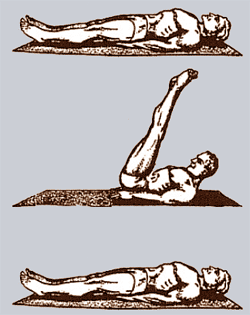 by: Dr. Mamak Shakib
by: Dr. Mamak Shakib
Most people think of exercise as either aerobic or strengthening. At the same time, most people only do them to lose weight or when they are concerned about their heart health. Because there is a lot of misconception, this article intends to explore each category of exercise and provide a basic guideline so that you can incorporate exercise into your daily routine.
Stretching: This is the most misunderstood and least practiced exercise. Stretching exercises are basic care for your muscles. They are absolutely necessary to perform every day, even if you only have 5 minutes to do them. The day you decide to not brush your teeth is the day that itís okay to not stretch (hope you get my point here!)
Aerobic: Designed to pump the heart, aerobic exercises increase blood flow as well as help with the bodyís oxygen/carbon dioxide exchange. Like all exercises, they increase the release of endorphins, natural painkillers. Aerobic exercise also increases stamina over time. Recommendations of good aerobic routines include recumbent biking, treadmill or the elliptical machine. Be aware if you choose the elliptical though: while low impact on the joints, it has high potential for collateral ligament knee injury (the ligaments are on the sides of your knees and are designed to keep them secure and in place). However, this type of exercise is not the best way to condition the heart, as you are about to learn...
Interval (Anaerobic) Training: Least known by the general public, this type of exercise is the BEST way to condition your heart and burn fat. It increases catecholamines which lead to increased fat oxidation, thus decreasing fat and weight. Interval training consists of alternating short bursts of high-intensity exercise with gentle recovery periods.
Core: Addressing the 29 core muscles of the back, abdomen and pelvis, core exercise helps support and protect the back and spine. This not only provides greater balance and stability but also assures proper spinal alignment. Why is that important you ask? The spine is designed to protect the spinal cord which is an extension of the brain. All spinal nerves branching off the spinal cord exit the vertebra and control different parts of the body. Since the nervous system (brain, spinal cord and its branching nerves) is in charge, the overall health of individuals depends on the good spinal integrity. Studies show that mechanical stress (spinal misalignments) plays a major role in the integrity of the immune system as well. While assuring proper spinal alignment is only obtained by visiting your chiropractor, maintaining its alignment is achieved by exercise practices like Pilates and yoga.
Now that you see the importance of different exercises and the roles that each play in your health, letís see how to get started...
The most common excuse is lack of time: to help avoid falling into the trap, you need to arrange your schedule around exercise. If you treat your daily exercise routine as a non-negotiable agenda then you will not allow for any excuses. By doing so, before you know it, your exercise regimen is a part of your daily routine, similar to brushing your teeth, eating dinner or sleeping.
Remember, your health is your best investment in life and it does not come to you, but from you. Similar to your education, your health is a pursuit and not an event, so stop procrastinating. It does not matter when you exercise as long as it is not too close to bedtime.
Many exercises can be done repetitively throughout the day. That can save you time and make you feel good knowing you're doing the right thing. For instance, when in the bathroom, do neck stretching and every time facing a counter top, do core (tuck the tummy in and squeeze the gluts). This is easier than you think if you put your mind to it.
The opinions expressed above are not those of KUCI management, UCI, or the UC Board of Regents. Dr. Mamak Shakib is the host of Health Matters which airs on Wednesdays from 8-9 a.m.on KUCI. She is the clinic director of Irvine Spine and Wellness Center.
Share
|
|

